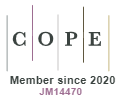Temporomandibular dysfunction: cephalometric analysis and photogrammetry
DOI:
https://doi.org/10.5585/conssaude.v12n2.4139Keywords:
Cephalometry, Photogrammetry, Temporomandibular joint disorders.Abstract
Introduction: The temporomandibular disorder (TMD) is characterized by changes in the masticatory muscles, temporomandibular joint and surrounding structures. Some authors suggest a relation between posture and TMD. Objectives: To evaluate and analyze the posture of the head and cervical spine in subjects with and without TMD. Method: The study included 20 female subjects with a mean age of 23.30 years, diagnosed by the RDC / TMD questionnaire, postural analysis through software CorporisPro and cephalometric teleradiographs. Results: The comparison of each angle of postural changes obtained by photogrammetry and alterations of measures evaluated by cephalometry between groups, showed no significant difference among the position of the head and cervical spine in subjects with and without TMD. Conclusion: This study concludes that the posture of the head and cervical spine did not differ between the subjects with and without TMD.Downloads
Downloads
Published
2013-07-31
How to Cite
1.
Pachioni FSM, Aoyama AY, Pavia A, Pernas DL, Savian NU, Fregonesi CEPT, et al. Temporomandibular dysfunction: cephalometric analysis and photogrammetry. Cons. Saúde [Internet]. 2013 Jul. 31 [cited 2025 May 24];12(2):177-84. Available from: https://periodicos.uninove.br/saude/article/view/4139
Issue
Section
Basic Sciences
License
Copyright (c) 2013 ConScientiae Saúde

This work is licensed under a Creative Commons Attribution-NonCommercial-ShareAlike 4.0 International License.
Views
- Abstract 356
- PDF (Português (Brasil)) 332






